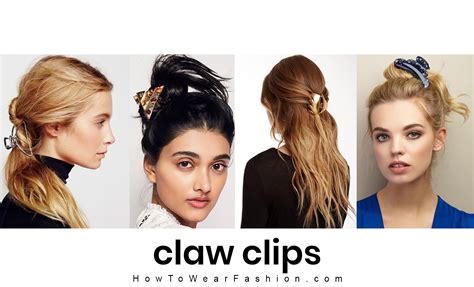Introduction
Hair clips, understated yet indispensable accessories, have graced the hair of individuals for centuries. From functional tools to stylish embellishments, the evolution of hair clips has mirrored that of fashion and self-expression. Today, with an overwhelming array of styles, materials, and designs available, choosing the perfect hair clip can be a daunting task. This comprehensive guide will delve into the world of hair clips, empowering you to make informed choices for any occasion or hair type.

Types of Hair Clips
The sheer variety of hair clips can be overwhelming. Here are some of the most common and versatile types:
- Bobby pins: These humble yet essential pins are indispensable for securing buns, braids, and flyaways. Their small size and flexibility allow for precise placement, making them ideal for creating intricate styles.
- Claw clips: With their two hinged arms that meet at the top, claw clips offer a quick and secure hold for medium to thick hair. They come in various sizes and designs, making them suitable for both casual and formal occasions.
- Barrettes: Barrettes feature a long, flat base that holds a hinged clip at one end. They are available in a wide range of materials, including metal, plastic, and acetate, and can be adorned with embellishments such as beads, gemstones, or feathers.
- Headbands: Headbands come in a variety of widths and materials, from delicate velvet to stretchy elastic. They can be adorned with decorative elements such as flowers, pearls, or studs, and are a great way to keep hair out of the face while adding a touch of style.
- Scrunchies: These soft, elastic hair ties are gentle on hair and create a secure hold. They come in a wide range of colors, patterns, and textures, making them a versatile accessory that complements any outfit.
Materials and Construction
The materials and construction of hair clips can impact their durability, functionality, and aesthetic appeal. Here are some of the most commonly used materials:
- Metal: Metal clips, such as stainless steel or aluminum, offer strength and durability. They are often used in bobby pins and claw clips, ensuring a secure hold.
- Plastic: Plastic clips are lightweight, affordable, and come in a wide range of colors and designs. However, they may be less durable than metal clips.
- Acetate: Acetate clips are made from a type of plastic that is both durable and flexible. They are often used in barrettes and headbands, and can be decorated with a variety of patterns or embellishments.
- Fabric: Fabric clips are made from soft, luxurious fabrics such as velvet or silk. They are gentle on hair and add a touch of elegance to any outfit.
- Elastic: Elastic clips, such as scrunchies, provide a secure hold without damaging hair. They are often made from stretchy materials, such as polyester or nylon, and come in a wide range of colors and styles.
Choosing the Right Hair Clip
Choosing the right hair clip depends on a variety of factors, including hair type, desired style, and occasion. Here are some guidelines:
- Hair type: For fine or thin hair, smaller, more flexible clips are recommended to avoid snagging or breakage. For thick or coarse hair, larger, stronger clips are necessary to provide a secure hold.
- Desired style: The type of hair clip you choose will depend on the style you want to create. Bobby pins are ideal for securing small sections of hair, while claw clips and barrettes can hold larger sections. Headbands and scrunchies are great for keeping hair out of the face or adding a touch of embellishment.
- Occasion: For formal occasions, more elaborate hair clips with decorative embellishments may be appropriate. For casual everyday wear, simpler clips in neutral colors or understated designs are a better choice.
Styling with Hair Clips
Hair clips can transform a simple hairstyle into a work of art. Here are some tips for using hair clips to create
